Technically speaking, soap is a combination of oil/fat, liquid, and lye. Here’s the thing… lye is a highly caustic alkaline solution, which can cause severe burns on your skin. If you choose to make soap (from scratch) you’ll need to use caution and wear proper protection. So… can you make soap without lye? Well… yes and no. While lye is required to make soap, you can buy melt and pour soap bases which have already combined the oil, liquid, and lye for you so you don’t have to work with lye directly. This method is super easy and requires just a few minutes of your time. So, let’s get started… here’s how to make soap without lye.
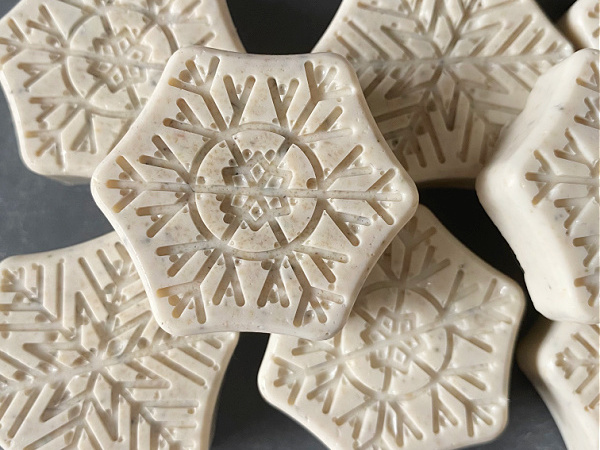
I am always drawn to pretty homemade hand soaps at craft fairs and farmer’s markets. They look so pretty with their little specks of vanilla bean, lemon peel or coffee beans. I pick them up and breath in their aroma… then I look at the price tag and quietly set them back down. I just can’t justify spending so much on a bar of soap. But then I got to thinking, could I just make my own soap? I could add in a few essential oils and my own “add-ins” (like the coffee beans or lemon peels). Ready to get started?
What You Need to Make Soap Without Lye
The following recipe makes 8-10 small bars of soap
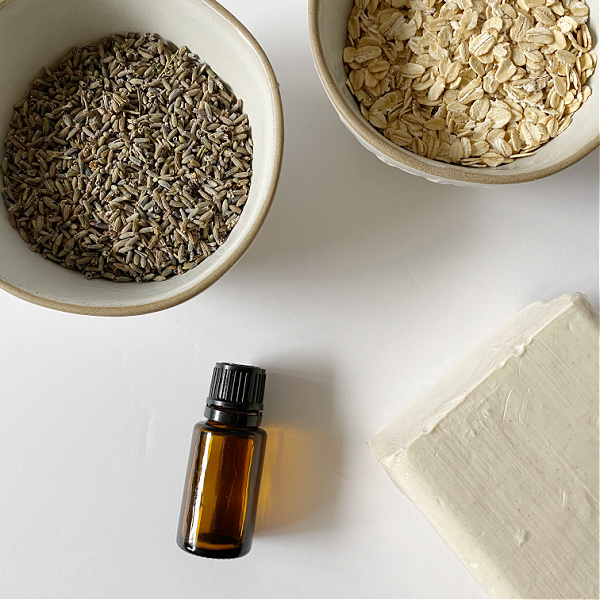
Affiliate links may be used. Please see our advertising disclosure for more information.
Ingredients Needed to Make Your Own Bar Soap
- Soap Base– There are many different soap bases to choose from including goat’s milk, shea butter, glycerin, and oatmeal. For this recipe, I chose to go with the oatmeal soap base, but feel free to choose whatever you’d like.
- *Essential Oil– I chose Lavender Essential Oil for this DIY bar soap, but there are so many combinations you could use. (See the FAQ section for some ideas). If you are unsure where to buy essential oils, check out this post to help you find a brand that works best for you.
- “Add-Ins”– As mentioned above, I love the look of little bits of dried lemon peel or coffee in my soap, so I’m adding a couple things to this soap recipe: Dried Lavender and Oats.
*I link to essential oil brands I believe provide high quality oils and are transparent with their testing (in other words, the company publicly provides GC/MS results). I also try to link to the essential oil that will give you the “biggest bang for your buck” (often times buying a 30ml bottle of oil means greater savings per ml than purchasing a 10ml bottle). I provide more information on where to buy essential oils so you can choose a brand you feel is right for you.
Supplies Needed for DIY Bar Soap
- Wooden Craft Stick– I have found that using a wooden craft stick makes for easy clean-up as you can just toss it in the trash vs. trying to get hardened soap base off a kitchen spoon.
- Microwave-Safe Glass Liquid Measuring Cup– Make sure you are using a glass measuring cup that is safe to use in the microwave.
- Silicone Soap Mold– I have found that silicone soap molds work better than plastic. The soap is much easier to pop out once hardened. You can go with a standard size bar of soap, or use a mini muffin silicone mold if you prefer a smaller size. I created mine with a snowflake mold, and I love how the bars of soap turned out.
- Coffee Grinder (Optional)- The first time I made this recipe I used whole oats and lavender buds, but the pieces were a bit big, so when I made it again I used a coffee grinder to grind up the lavender and oats. This made for a much better texture and consistency.
How to Make Soap Without Lye
Some soap bases come scored, and others require you to cut them. In either case you’ll need about eight 1″ squares of soap base. Start by placing your cubes into a microwave-safe glass measuring cup.
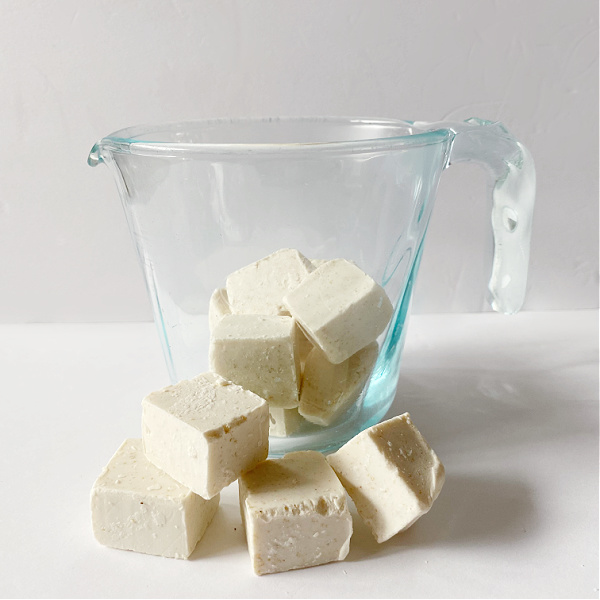
Place it into the microwave and heat, on high, for approximately 30 seconds. Stir with a wooden craft stick, and continue to microwave, on high, in 10 second increments; stirring in between. This stuff melts pretty quickly, so don’t overdo it. (For reference, mine took a total of 40 seconds: the initial 30 seconds + another 10 seconds.)
Once your soap base has melted, mix in your “add-ins” (in my case, ground lavender buds and oats*) and stir it in with a craft stick.
*For reference, I placed 1/2 Tablespoon lavender buds and 1/2 Tablespoon oats into a coffee grinder and ground down to desired size.
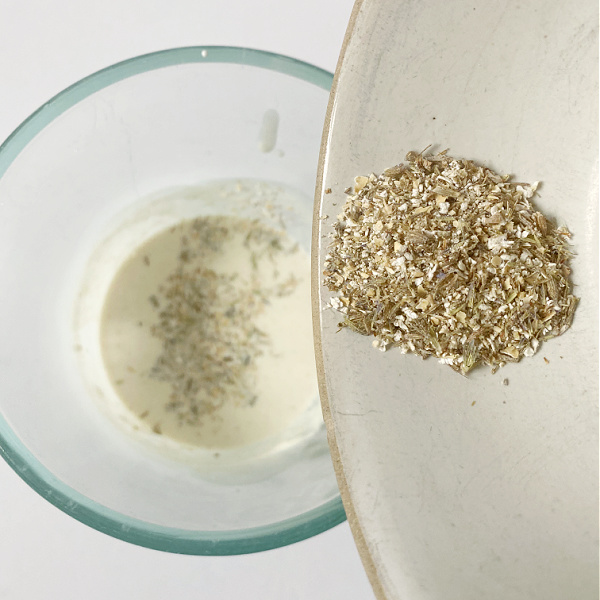
Once your “add-ins” are mixed in, add 20-30 drops of essential oil, giving it one last stir. The soap begins to harden right away, so you need to move quickly.
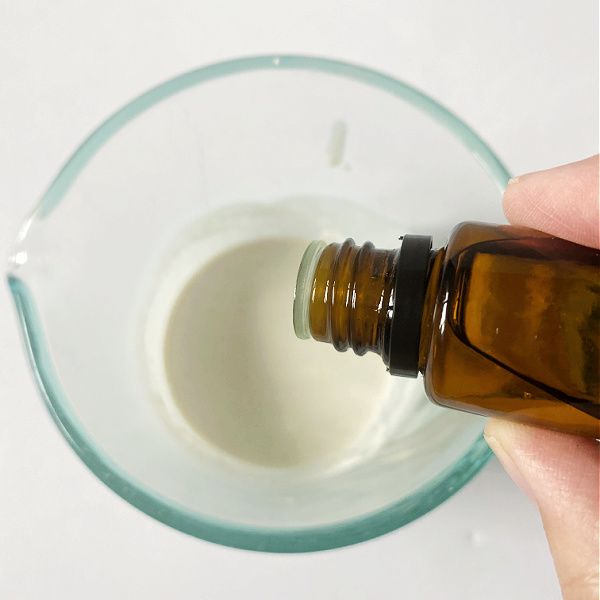
With everything thoroughly mixed, pour the mixture into your soap mold.
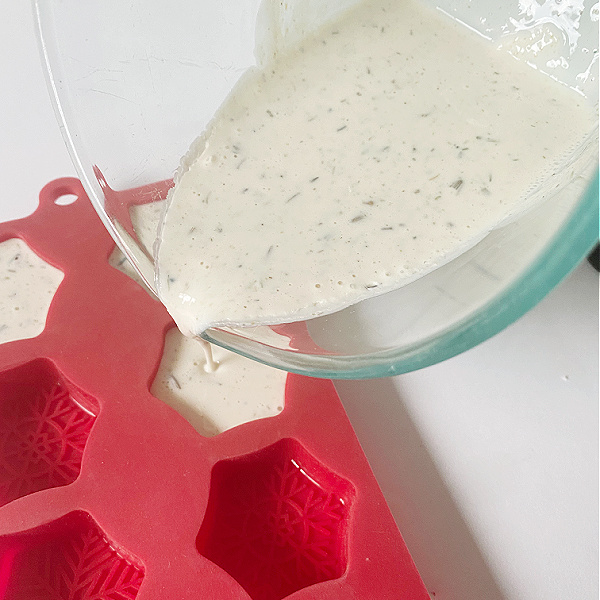
Allow the soap to cool and harden at room temperature. Once hardened (which takes about 30-60 minutes depending on how big your soaps are), you can pop the soap out of the molds and it’s ready to use.
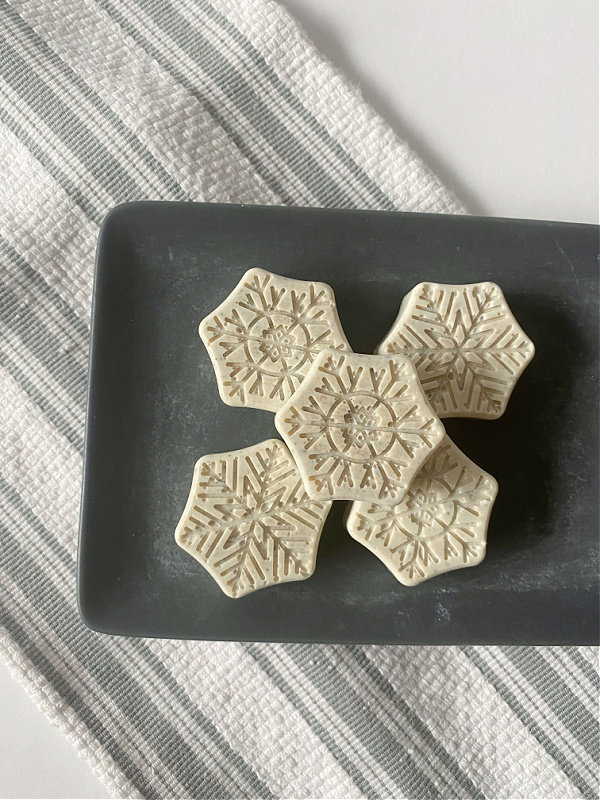
Common Questions About Making Your Own Bar Soap
What’s the Difference Between Making Soap from Scratch vs Using a Melt and Pour Soap Base?
Making soap from scratch requires proper weighing of ingredients, handling lye (which is a big “no thank you” from me), and a lot of time (days for the soap to harden and a several weeks for the soap to cure). Melt and pour soap bases allow you to skip this process because it’s already been done for you. No need to get precise measurements, no handling lye, and no waiting! Also, the “from scratch version” should not be used if you are involving children in the process, as the use of lye should only be done by a responsible adult with proper protection.
If you’d like to make soap from scratch, here’s some detailed instructions I found.
Is There Lye in Melt and Pour Soap Base?
Yes… and no. Lye is required in soap-making, however, the lye is chemically converted during the saponification process, so while lye is used to make the soap base, no lye remains in the soap base after the saponification process. Make sense?
What Are Some Good Combinations for Soap Making?
While the recipe above creates a lavender & oat hand soap, there are so many combinations you could try. Here are just a few I came up with…
Peppermint Mocha
Goat’s Milk Soap Base
30 drops Peppermint Essential Oil
1 Tablespoon Fresh Coffee Grounds
Lemon Rosemary
Any Soap Base
20-25 drops Lemon Essential Oil* and 5-10 drops Rosemary Essential Oil
1/2 Tablespoon Dried Rosemary and 1/2 Tablespoon Dried Lemon Peel
Orange Clove
Any Soap Base
20-25 drops Orange Essential Oil* and 5-10 drops Clove Essential Oil
1 Tablespoon Dried Orange Peel with a sprinkle of Ground Cloves
Sweet & Spicy Tea
I made a Homemade Foot Soak using Tea and the scent is absolutely delightful with its warm spicy notes. For soap:
Any Soap Base
6 drops Lemongrass, 6 drops Cinnamon Bark, 4 drops Peppermint, 2 drops Ginger, and 6 drops Orange*.
Sweet & Spicy Tea (just cut a bag open and pour the loose tea into the mix)
Lavender, Mint & Poppy Seed
Any Soap Base
10-15 drops Lavender Essential Oil and 10-15 drops Peppermint Essential Oil
1 Tablespoon Poppy Seeds
*Citrus essential oils are very mild in scent and may not hold up in the soap base. I have read that you can use a 5-fold citrus essential oil (5x stronger) for soap-making, which should hold up in the soap base. Honestly, I haven’t found a trusted brand that makes a 5x citrus oil, so if you know of one, let me know!
If you’d rather try a foaming hand soap, this is one of my favorite recipes! DIY Foaming Hand Soap
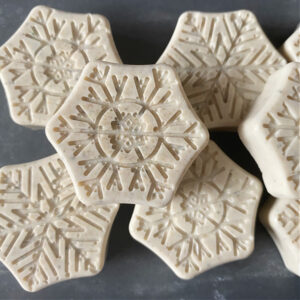
Homemade Hand Soap
Ingredients
- 8 1 Inch Cubes Soap Base
- 30 Drops Essential Oil
- 1 Tablespoon Add-Ins Optional
Supplies
- Microwave Safe Glass Measuring Cup
- Wooden Craft Stick
- Coffee Grinder (Optional)
- Silicone Soap Mold
Instructions
- Carefully cut your soap base into 1 inch cubes and add 8 to a microwave-safe glass measuring cup.
- Melt soap base in microwave. Start with 30 seconds on high. Stir with a wooden craft stick, and then heat in 10 second increments (stirring between each interval) until soap base is melted. (This only took 40 seconds TOTAL for mine 30+10)
- Mix in 1 Tablespoon "add-ins" : coffee grounds, dried herbs, dried citrus peels, dried lavender, oats, etc. This recipe used 1/2 Tablespoon dried lavender and 1/2 Tablespoon oats, both ground with a coffee grinder.
- Add 30 drops of essential oil and stir. For this recipe I used 30 drops of lavender essential oil.
- Pour mixture into a silicone soap mold.
- Allow soap to cool and harden at room temperature, then pop them out of the silicone mold and they are ready to use.
Love it? Pin it!
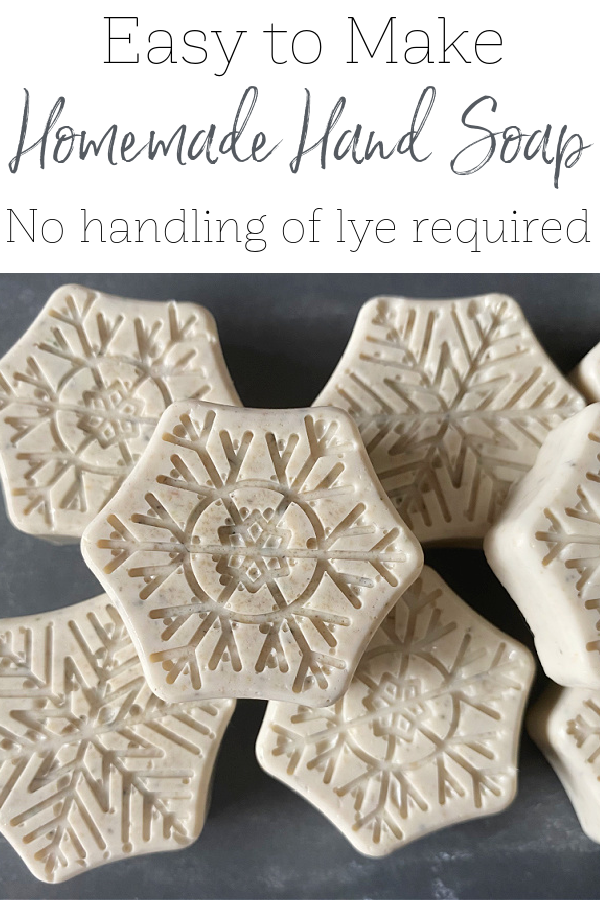

What about those of us who don’t have a microwave??
You can also melt the soap on the stove-top using a double boiler 🙂
Great recipe for you just keep it simple
It’s a great receipe for non lye soap, but the add in can I switch out to adding butters and other oils?
I don’t think I would add additional oils and butters, simply because I’m not sure what that would do to the soap base. My fear is it may not set/harden correctly, or may the added oils/butters could separate out. You could certainly give it a try with a small batch and see what happens; those are just my thoughts/concerns.
Anxious to try these recipes. Wish me good luck